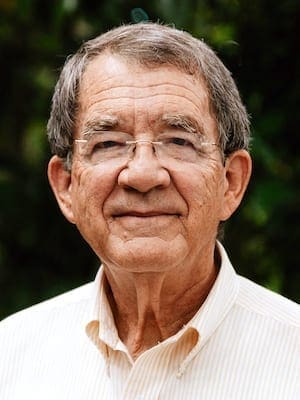The opening act of the 112th Congress’ political theater was a selective reading of the United States Constitution, a dramatic demonstration of allegiance to the nation’s foundational document. Responses varied from affirmations of the exercise to suspicions it was an empty gesture.
It’s hard to find anyone who denies the value of the Constitution as the cornerstone of our government, but there may be value in some careful thinking about how we understand the nature and application of this expression of our national covenant.
Working recently with a class on the context of the New Testament, we examined the Judaism of the period. We noted the central allegiance of the Jewish people to the Torah as the guiding formulation of their covenant relationship with God. We noted also that two of the parties of Jewish leaders had very different understandings of how the Torah was to be regarded, interpreted and applied.
The Sadducees were an aristocratic, socially and economically privileged group, who enjoyed both priestly religious authority and a close association with the Herodian political dynasty. Their adherence to the Torah was characterized by a strict reading of the law and a rigid application of its rules.
They did not ascribe authority to any subsequent interpretation that modified its strict rules or made application to issues outside its literal boundaries. The high priest Caiaphas and the Sanhedrin would be familiar representatives of this party in the gospel story.
The Pharisees, by contrast, were a group identified not by their economic, social and political standing but by their commitment to preserve, teach, interpret and apply the principles of the Torah to the ever-changing circumstances of the Jewish people.
They understood the Torah to be their core covenant faith document, but they also believed it invited and required an ongoing interpretation and application. They tended to be more lenient in applying the penal rules (that is, stoning) and more flexible with the ritual rules.
The story of the best known Pharisee in the New Testament, Paul, portrays a strong passion for truth combined with the courage to change in response to new understanding. We remember also the inquiring Nicodemus of John 3 and the peacemaker Gamaliel of Acts 5:34ff, as well as those of this party who dined frequently with Jesus (Luke 7:36ff and 14:1) and warned him of the plot against him (Luke 13:31).
Two perspectives toward the Torah: one held by a priestly class who wanted to apply it “just as it was” in ways that conveniently supported their privileged place in society; the other held by a fellowship of rabbis who regarded it as a “living” law whose spirit more than letter would continue to guide the covenant community into a future of new challenges for peace and justice.
It was hard not to connect these ancient perspectives with the current debates about the nature of the Constitution. “Originalists,” whose current standard bearer is Supreme Court Justice Antonin Scalia, argue that the Constitution “says what it says and means what it means” and does not permit “revisionist” interpretations to respond to current winds of doctrine or contemporary issues. Others, who see it as a “living” document, see it as inviting, even requiring, interpretation and application to challenges unanticipated by its original writers.
Certainly, the Torah and the Constitution are not the same thing; but they both function as foundational formulations for covenant communities that embrace some common principles for life and that move through history with a similar vision. The authority they embody and the guidance they provide will vary according to which perspective is more operative in the community’s life.
Human perspectives seem to stay the same; only the names and issues change.
Will our way of being “constitutional” be the way of Caiaphas and the Sanhedrin (“He’s disrespecting the Temple and pushing for change! Away with him!”), or that of the prophets (“I will put my Law within them, and write it upon their hearts ….” – Jeremiah 31:33) and Jesus (“You have heard it said … but I say unto you….” – Matthew 5)?
Will the Constitution protect a status quo we find beneficial or point toward a future in which we apply its principles in ways its “originators” did not envision?
Colin Harris is professor of religious studies at Mercer University and a member of Smoke Rise Baptist Church in Stone Mountain, Ga.
Professor emeritus of religious studies at Mercer University, a member of Smoke Rise Baptist Church in Stone Mountain, Georgia, and the author of Keys for Everyday Theologians (Nurturing Faith Books, 2022).

